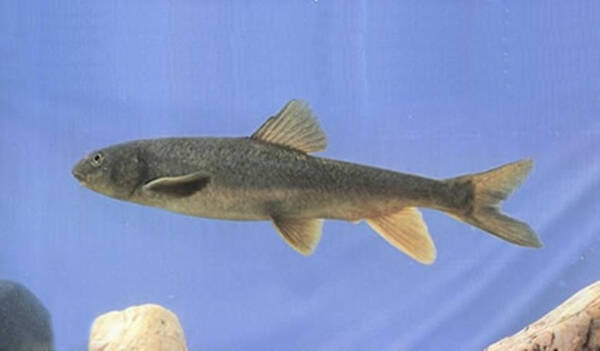The Latin name of sharp naked carp is Oxygymnocypris stewartii. It is a fish of the genus Oxygymnocypris in the family Cyprinidae. The origin of this species is in the Nianchu River.

Due to the high altitude and low annual average water temperature, a special ecological environment has been formed. The sharp naked carp adapts to the environment with precipitation and alpine snow water as the source and clear water. It mainly feeds on other fish and aquatic insects. The largest individual can reach more than 600 mm and weigh more than 3.5 kg.
The mature eggs of Oxygymnocyprisstewartii are round, yellow, sinking, and have a diameter of (2.57±0.07) mm. After the fertilized eggs absorb water and fully expand, the diameter of the eggs is (3.22±0.07) mm. The water temperature is 9.5-11.8℃. The embryonic development of Oxygymnocyprisstewartii lasts for 265 hours. According to the external morphology and typical characteristics of embryonic development, it can be divided into 8 stages and 32 periods, including fertilized eggs, embryonic disc formation, cleavage, blastocyst, gastrula, neurula, organ differentiation and hatching. The total length of the hatched fry is (10.27±0.15) mm. The yolk is exhausted 20 days after hatching, and the total length is (15.22±0.27) mm. 80 days after hatching, the fry is (23.65±0.59) mm in total length, with anal scales and fins, and the lateral line of the fry is fully formed and clear, and the body color and body shape are close to those of adult fish. The characteristics of the early development of the sharp naked carp reflect its adaptability to the waters of the Yarlung Zangbo River.
The distribution of the sharp naked carp is limited, the number is small, the growth rate is slow, and the age of sexual maturity is late. In the past, due to the influence of tradition and religion, Tibetans did not eat fish, which enabled the sharp naked carp to maintain a certain population size for a long time. Since the 1950s, a large number of people from the mainland have entered Tibet for development, and the intensity of fishing has continued to increase. The catch has far exceeded its growth rate, causing a sharp decline in the population of this species.
It is listed in the second level of the "List of National Key Protected Wildlife in China". (Wild populations only)
Protect wild animals and stop eating game.
Maintaining ecological balance is everyone's responsibility!